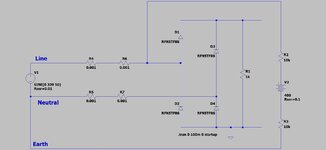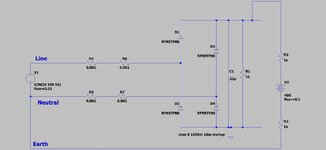cupoftea
Advanced Member level 5
Hi,
EV chargepoints need >6mA DC detection in the mains, so the Type B RCD's dont get blinded..
But how do you end up with 6mA DC in the mains from charging an EV?
EV chargepoints need >6mA DC detection in the mains, so the Type B RCD's dont get blinded..
But how do you end up with 6mA DC in the mains from charging an EV?



